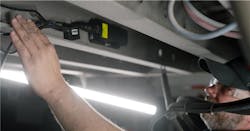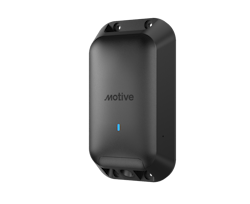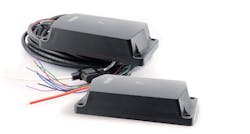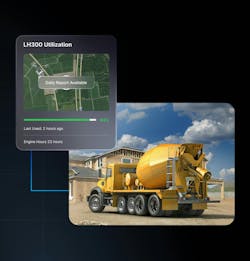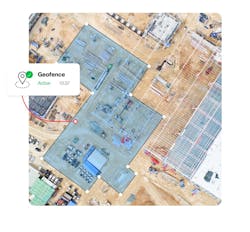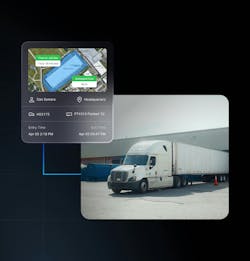From trucks to trailers: How asset tracking delivers full-fleet visibility
Key takeaways
- Asset tracking reduces theft and loss by providing real-time location alerts, saving fleets thousands annually.
- Monitoring asset utilization helps fleets identify underused equipment, optimize deployment, and cut costs.
- Connected trailer technology offers detailed insights into trailer health, cargo, and safety, enabling proactive maintenance and operational readiness.
- Real-time data from asset trackers supports fleet digitization, offering comprehensive dashboards with analytics, reports, and live updates for better decision-making.
Any asset that isn’t tracked is a liability for fleets. Rogue assets cut into the cost of operations, safety, and maintenance, according to Frank Schneider, director of product management at Phillips Connect, an asset tracking provider that specializes in Class 8 trailers.
“That's something that we hear a lot from our clients, and [safety, maintenance, and operations] talk right to the value proposition of our solution,” Schneider told FleetOwner.
For Schneider, tracking assets isn’t just about pinpointing an asset's location—although that’s still an important aspect of the technology. Instead, Schneider said Phillips Connect tracks “the dots on a map” and analyzes how to “improve the performance of those fleets—all of which are tied to a financial component,” he explained.
To boil it down into one term, asset tracking is all about visibility.
Hidden fleet costs: How untracked assets drain uptime and profitability
Theft costs fleets thousands. Take construction fleets, for example. A 2019 study from the Associated Schools of Construction analyzed 15,000 reported incidents of theft and found that contractors lost an average of $6,000 per theft incident. When a truck was involved, the average cost of an incident rose to $42,000. What’s more disturbing is that less than 7% of those incidents resulted in equipment recovery.
Underutilized assets also incur high costs. According to the American Transportation Research Institute (ATRI), the average cost of operating a truck is about $90 per hour. Using this data, mobile maintenance provider Torque by Ryder deduced that for each hour a truck spends idle, fleet owners should consider that as $90 lost.
Assets that are overused and require maintenance can be even more costly for fleets. For every vehicle experiencing downtime, light-duty commercial fleets lose an average of $760 per day, Michelin reports. Heavy-duty fleets can expect even higher costs.
The solution comes in one form: an asset tracker.
How asset tracking drives fleet efficiency and operational visibility
While GPS tracking devices aren’t new to the industry, their popularity is growing.
“Demand for asset trackers is accelerating,” said Robert Higdon, director of product for equipment monitoring at Motive, a fleet management provider. He believes that it stems from companies’ use of vehicle tracking technology, which provides fleets operational visibility down to incremental metrics.
Real-time fleet visibility: Turning telematics data into smarter operations
Echoing that sentiment, Frank Bussone, VP of technology and data analytics at Corcentric Fleet Solutions, wrote in a blog for FleetOwner: In fleet operations, "it’s impossible to manage what you can’t see." Therefore, the highest performing fleets in the industry all rely on data from telematics and fuel management systems, maintenance systems, and more.
When that data is analyzed, it provides fleet operators the “visibility into the actual operating cost of each truck, enabling smarter decisions on maintenance, utilization, routing, and replacement,” Bussone said.
Asset tracking is an extension of that visibility, providing fleets with a detailed look into operations beyond the vehicle.
Fleet owners “see the value in having real-time data for vehicles and what that's brought to the efficiency of their operations,” Higdon told FleetOwner. They may say, “‘I have that same set of problems for my trailers, for my heavy equipment. The same way that I don't want my vehicles to get lost or stolen or ... sitting around when I could [have] a more productive purpose for them.’”
Once fleet operators employ asset trackers, the data they receive can lead to multiple benefits.
Maximizing asset utilization for cost control and better ROI
Mathew Long, Verizon Connect’s senior manager of product marketing, believes the core benefits of asset tracking come down to cost savings tied to accurately monitoring asset utilization, especially if data determines that assets can be offloaded.
You might think an asset is being used one way, but when you look at the insight provided by the asset tracker, “suddenly you realize that the asset hasn’t been touched in the last three days,” Long told FleetOwner. It’s through this data that a fleet is able to determine whether an asset should be unloaded or perhaps moved to another site where it’s needed.
Understanding proper asset utilization can help fleets save hundreds and even thousands of dollars.
Higdon provided the example of Motive customer Agmark, a bulk liquid transport fleet. Having clear visibility of its asset utilization allowed the company to cut its asset count by 11% without losing capacity. It also increased asset utilization by 10%. While each fleet is different, even if a fleet off-loads a single asset, it could save on monthly payments and insurance.
Protecting fleet assets: How tracking technology reduces theft and downtime
Additionally, simple location tracking can assist fleets with recovery.
Long recalled an instance where a $50,000 backhoe was stolen from a construction fleet. Because Verizon Connect allows customers to receive alerts when assets have moved from a geofenced area or when assets are operational during non-working hours, the fleet manager was able to relay the exact location to law enforcement within a timely manner and recover the asset.
At its core, asset tracking provides “that quick peace of mind to know that a particular vehicle or, respectively, an asset is where it’s supposed to be at that moment in time,” Long said.
With asset loss, Motive’s Higdon recalled multiple instances when his customers would spend valuable working hours locating single pieces of equipment to move from one site to another. He said one company even made it a common practice to reserve an entire week for asset retrieval or "yard hunts." The hours wasted cut into the company’s bottom line.
However, those with asset tracking technology can use data to shift that asset retrieval time from weeks to minutes. This results in “assets that are being returned to your inventory to distribute across other jobs,” he said. For equipment rental companies, "that's rentable inventory that you can then reassign to the next job and start to secure new revenue.”
Connected trailer technology: The next frontier in fleet performance
While asset tracking can be a one-size-fits-all solution—for both powered and non-powered assets, according to Long—some assets may benefit from more sophisticated tracking.
Phillips Connect’s solution essentially equips trailers with a GPS tracker, a modem, multiple sensors, and sometimes even cameras that communicate with Phillips Connect’s software, which fleet operators can access on a digital platform, Schneider said.
Those sensors monitor the trailer’s metrics and specific details such as what percentage of the tires are low, how much cargo space is available, whether the trailer is located near a maintenance provider, and if the trailer door is closed.
By tracking these metrics, Phillips Connect can help fleet operators understand operational aspects, such as a trailer’s location as well as its “preparedness,” including whether the trailer is fit to be loaded and hauled across the country, Schneider said.
Phillips Connect’s trailer trackers can help from a maintenance perspective through tire monitoring, including notifications of hot wheel bearings, open trailer doors, and more. If the maintenance problem could lead to a safety event, fleet managers can set automatic maintenance orders to resolve the problem quickly. Improper maintenance or overdue maintenance can lead to roadside incidents, which directly affect the fleet’s overall safety.
“These are some of the things that our clients are really concerned about and that we see in the field,” Schneider explained.
The future of fleet management: Total visibility through connected asset tracking
Fleets' need for asset tracking technology has grown alongside its popularity, as asset trackers are becoming a competitive advantage.
Early adopters of asset trackers are benefiting from the efficiency gains and “positive impact to their financial operations,” Schneider said. He explained that companies that have yet to or have been slow to adopt asset trackers are now competing with early adopters who are now financially better off.
What’s more, asset trackers of today support the industry’s current trend toward “digitization,” Motive’s Higdon said, as many asset trackers send data straight to a fleet manager’s dashboard.
Today’s asset trackers not only provide visibility to a variety of assets and vehicles but also provide reports, analytics, insights, and even live locations all in one place, according to Verizon Connect’s Long. And not to mention, these trackers are becoming more rugged and are built to last. (Verizon Connect’s asset tracker comes with a battery life of up to 13 years.)
Additionally, asset trackers from telematics providers such as Motive and Verizon Connect further support digitization efforts by indicating fleet-wide performance metrics on a single pane of glass. From the vehicle to the trailer to on-site generators, fleet managers can access it all from one dashboard.
Phillips Connect’s trailer tracking solution takes that digitization several steps further, nearly to the future, by ushering in the industry’s “connected trailers.” Using Phillips Connect technology, one fleet is even able to load pallets from a warehouse to a specific location within the trailer—all without any human interaction, Schneider said. This is all possible because of the increased visibility trucking technology providers are offering their fleet customers.
While their name indicates a single function—simply tracking assets—employing these devices in a fleet can boost fleet efficiency and improve the bottom line. Higdon sums it up perfectly:
“Ultimately, asset tracking is about getting the most out of the equipment that you already have, making smart investment decisions about what equipment you need in the future, and then keeping that equipment that you already have on the road and on the job,” he said.
Although not every fleet is ready to deploy robots for trailer loading and unloading, all fleets can benefit from asset tracking that offers benefits comparable to telematics tracking on fleet vehicles.
About the Author
Jade Brasher
Senior Editor Jade Brasher has covered vocational trucking and fleets since 2018. A graduate of The University of Alabama with a degree in journalism, Jade enjoys telling stories about the people behind the wheel and the intricate processes of the ever-evolving trucking industry.

